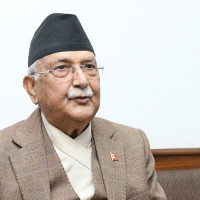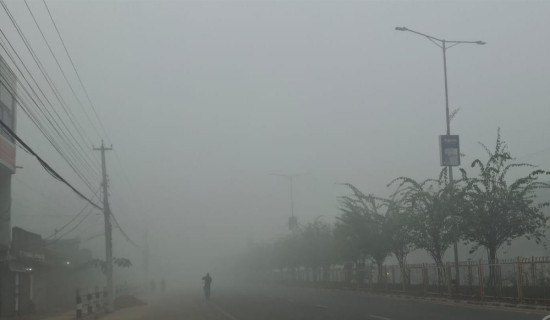- Friday, 2 January 2026
Devices to read smart driving licenses lacking
Kathmandu, Feb. 27: Since November 30, 2015, the Department of Transport Management started printing smart driving licenses. The step was expected to end the practice of using fake licenses.
However, even several years after the smart licenses came into effect, authorities have been unable to differentiate legitimate and illegitimate license in lack of necessary digital resources.
A smart license has an electronic chip. The chip’s information can be read through certain hand-held smart card readers. “When we check the chip’s data through the respective device, we can identify whether the license is authentic or not,” said Deputy Inspector General of Police (DIGP) Mira Chaudhary.
Until now, transport authorities informed that over 3 million smart driving licenses have been distributed.
DIGP Chaudhary, who is also the chief of Kathmandu Valley Traffic Police Office (KVTPO), however, informed that they did not have a single hand-held smart card reader with them.
According to traffic police, they enforce traffic rules with the resources they are provided with by the concerned authorities, such as the DoTM.
The DoTM informed that they had already provided smart card readers to Nepal Police. However, traffic police said that they had not had one.
“Under the Information and Communication Technology Project, the Nepal government received 200 smart card readers through the financial support of the Asian Development Bank. DoTM director general Tek Raj Pandey handed over 198 smart card readers to Nepal Police Headquarters’ Additional Inspector General of Police (AIGP) Dibesh Lohani on October 19, 2022,” read a statement issued by the DoTM on October 19, 2022.
However, the KVTPO officers informed that they haven’t received a single piece of those smart card readers till date.
“We have a mobile application to check whether a temporary driving license is legitimate or not. However, we cannot check the smart driving license as we have no device to check them,” said DIGP Chaudhary.
The temporary driving license is provided after a candidate passes the driving test. The temporary license, which lasts for a year, has a QR code that can be scanned by the application with traffic police.
If a temporary driving license holder is found violating traffic rules for more than five times within the one-year period, he/she will not receive a permanent driving license.
“Just because we have a smart card doesn’t mean that a fake copy of it cannot be created. However, we cannot identify whether a license is fake or genuine unless it is cross-checked by means of a smart card reader,” said DIGP Chaudhary.
According to Section 45 of the Motor Vehicles and Transport Management Act, 1993, no person shall drive a motor vehicle without obtaining the driving license.
Similarly, Section 46 states that no person shall allow a motor vehicle which is in his or her ownership or cus-tody to be driven by a person who has not obtained the driving license.
“People haven’t understood the importance of a driving license. It is what makes them eligible to drive a respective vehicle on the road. People also use fake licenses because they are aware that we don’t have resources to check them,” DIGP Chaudhary told The Rising Nepal.
Since February, four individuals have been arrested with fake smart driving license from different parts of the Kathmandu Valley.
“Suspicion arises over a smart license when there are some differences in the colour of the license. Fake license has a lighter colour contrast than a real one. Sometimes, legitimate license also gives off a light colour due to the way an individual handled it,” said DIGP Chaudhary.
According to her, traffic police had sent two driving licenses to the Kathmandu Valley Crime Investigation Office (KVCIO) upon suspicion on February 13 and February 20 respectively.
The KVCIO had then arrested three individuals on February 13 and 14 for their alleged involvements in creating and using fake smart license. \
Kanchan Gurung, 34; Anil Rai, 38; and Rajan Tamang, 36, were arrested in the case.
Similarly, on February 19, traffic police had sent a driving license of Prakash Gharti Magar, 28, to the KVCIO upon suspicion. He was found to have created a fake license by adding the categories. Police had then arrested Magar and handed him over to Lalitpur Police for further legal process.
Meanwhile, talking to The Rising Nepal under condition of anonymity, couple of officers at the KVTPO said that the office was unable to identify where the smart card readers had gone after the handover.
















